Trace Chemo
Trace chemo is medical waste that has come into contact with very small or ‘trace’ amounts of chemotherapeutic agents. Examples include empty vials that once housed chemotherapy drugs and IV bags used to administer chemotherapy.
Because this type of waste has only minimal traces of chemo, it is seen as less hazardous than bulk chemo waste that contains higher agent quantities. However, trace chemo still requires careful disposal based on the chemicals’ toxicity.
Sharps
In medical waste, sharps refer to any items that can potentially puncture or cut skin. Needles, syringes, and scalpels all fall under this umbrella, as do broken test tubes.
While the safe disposal of sharps is critical in preventing needlestick injuries to healthcare and waste management workers, it’s also a matter of avoiding transmission of bloodborne pathogens.
Non-Hazardous Pharmaceuticals
Non-hazardous pharmaceuticals are medications that are not classified as hazardous waste by industry regulators. When disposed of properly, these medicines — a list that includes non-prescription drugs like aspirin and ibuprofen — are not deemed to pose a significant risk to human health or the environment.
HIPAA Documents
HIPAA documents are considered part of the medical waste stream because they contain protected health information. To maintain confidentiality and avoid unauthorized access to sensitive patient information, these documents must be discarded in a secure manner.
Pathological Waste
Pathological waste refers to tissues and other biological materials removed in medical procedures. Because of its potential to be infectious, this category of medical waste is generally considered hazardous, with special handling and disposal methods required.
Effective Waste Disposal Starts With Segregation at the Source
When it comes to disposing of medicines, sharp, and other non-hazardous materials, proper segregation at the source is critical. By accurately categorizing and separating waste, healthcare facilities can enhance safety and compliance while lowering costs.
For example, over-the-counter medications often get added to red bag disposal containers even though it’s unnecessary. This can increase the volume of red bag waste and the subsequent costs for handling and disposing of biohazardous materials. Careful segregation at the outset of waste management helps keep costs in check.
The use of clearly labeled, color-coded bags and containers helps ensure staff adhere to protocols.
Ensure Containers Are Durable Enough To Handle Waste Needs
While on the topic of medical waste containers, it’s important to ensure containers are able to safely accommodate stored waste. Generally, this means medical waste containers should be leak-proof and outfitted with secure lids.
When handling sharps, puncture-resistant containers become especially critical. Sharp medical waste containers are generally made from durable, thick plastic and include fill-level indicators to ensure they aren’t over capacity, which would increase the risk of punctures.
Leverage Sustainable Treatment & Disposal Options
Neutralizing or destroying medical waste of various types is achieved through a few different routes:
- Autoclaving (steam sterilization): Waste is subjected to a high-pressure steam that kills microorganisms and makes the waste safe for disposal. This is a common method for treating infectious waste like contaminated sharps.
- Incineration: Often used for pathological waste and pharmaceuticals, burning waste thermally treats it and destroys pathogens.
- Chemical treatment: Suitable for liquid waste like laboratory solutions, disinfectants or other chemical agents are used to neutralize pathogens.
While autoclaving and chemical treatment are recognized as more eco-friendly options to treat and dispose of medical waste, there’s an even better option on the table: ozone treatment technology.
Ozone treatment technology effectively destroys pathogens in medical waste without generating byproducts or greenhouse gases. Ozone treatment systems generally use less energy than conventional waste treatment options, and the process leaves behind no residue or ash, further minimizing the overall waste that requires disposal.
One of the other main benefits of ozone treatment technology is that it can be applied to a wide range of medical waste streams. Healthcare facilities can use it to effectively treat non-hazardous regulated medical waste in the six categories described above: sharps, red bag waste, trace chemo, non-hazardous pharmaceuticals, pathological waste and HIPAA documents.
Turn to WasteMedX for Your Medical Waste Disposal Needs
WasteMedX is dedicated to providing healthcare facilities with safe, efficient, and cost-effective solutions for medical waste disposal. Utilizing state-of-the-art ozone treatment technology, we can effectively treat and dispose of a wide range of medical streams such as red bag waste, trace chemo, sharps, non-hazardous pharmaceuticals, HIPAA documents, and pathological waste.
Learn more about our services.



